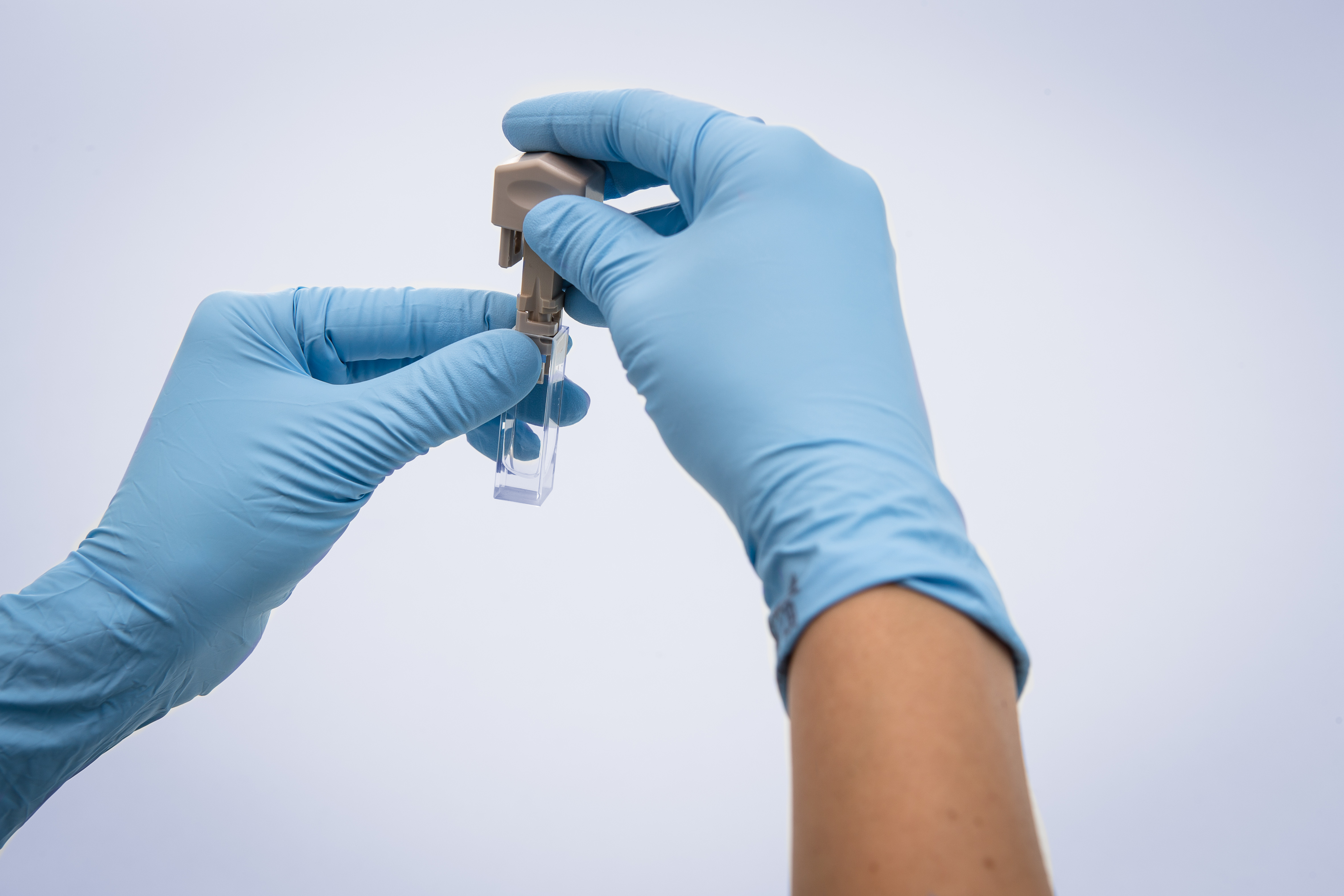
RNA interference is a highly promising gene silencing technique in which translation of the target gene’s messenger RNA (mRNA) is inhibited by short complementary RNA sequences. These include the so-called small interfering-RNAs (siRNA), which are double-stranded and whose sequence is perfectly complementary to that of the target mRNA, therefore acting with a high degree of specificity, and the single-stranded micro-RNAs (miRNA), which can interfere with a broader range of targets through imperfect pairing.
One of the biggest challenges of RNA interference is the difficulty to deliver intact siRNA/miRNA across the cell membrane and into the cytosol while preserving cell viability. Intracellular delivery of RNA by transfection using peptide-based nanoparticles has shown promise. Such vectors are composed of the negatively charged nucleic acids and positively charged peptides, which co-assemble spontaneously into nanoparticles in solution. The arginine-rich peptide protamine forms nanoparticles that are predicted to exhibit good cell-penetrating properties and lower cytotoxicity than other commercially available transfection reagents.
miR-27a-protamine nanoparticles may represent a new therapeutic approach to prevent metabolic complications associated with diabetes and obesity.
Since nanoparticle properties such as size and zeta potential may influence particle uptake by target cells and/or tissues in vivo, light scattering technologies represent an important tool to investigate the physicochemical properties of miRNA-delivery systems.
Here we demonstrate that the Litesizer 500 returns rapid and precise results despite very low sample concentration and volume.
In an experiment carried out by Anton Paar, dynamic light scattering (DLS) was used for particle size measurement and a novel patented electrophoretic light scattering technology called cmPALS for zeta potential determination.
Particle size analysis of nanoparticles was prepared with a miRNA:protamine ratio of 1:3. Serial dilutions from 50 μg/ml down to 0.5 μg/ml final miRNA concentration were performed and results were expressed as hydrodynamic diameter or peak intensity (average ± SD from 3 measurements).
Click on the link above to download the Application Report and to learn about the results of their experiment.










Water Sector Talent Exodus Could Cripple The Sector
Maybe if things are essential for the running of a country and we want to pay a fair price we should be running these utilities on a not for profit...